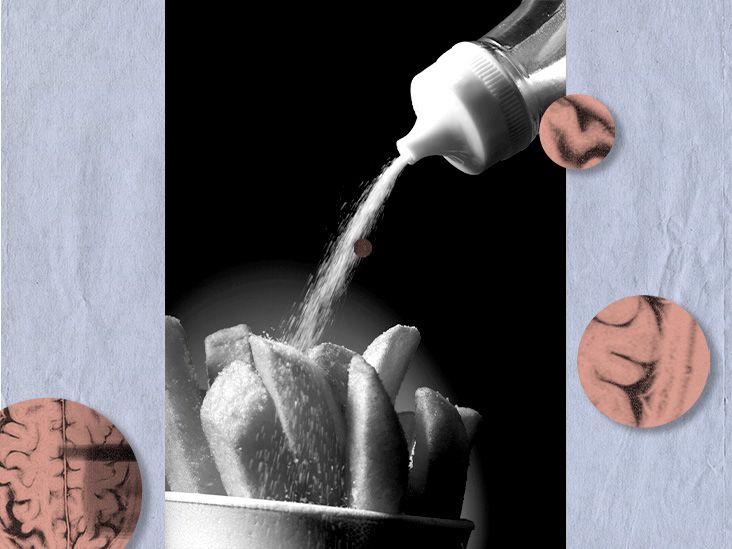People discovered saccharin accidentally almost 150 years ago. It has since become an alternative to sugar to sweeten foods and beverages.
Some animal research some decades ago linked saccharin with possible health issues, leading to a decline in the substance’s popularity. However, later studies in humans did not confirm a link to cancer.
This article explores saccharin and other types of sweeteners. It also looks at possible risks.

Companies use saccharin as a non-nutritive or artificial sweetener. People first discovered the substance by accident in 1879, and its use became widespread during World War I because of the sugar shortage. During the 1960s, marketers promoted it as a weight loss product under the trade name Sweet and Low.
Manufacturers make saccharin through various chemical processes using the chemical toluene or anthranilic acid as the base ingredient. The process results in a white, crystalline powder that is stable under a range of conditions.
Saccharin has three forms:
- acid saccharin
- sodium saccharin
- calcium saccharin
Sodium saccharin is most popular in artificial sweeteners, although some people find it has a bitter, metallic aftertaste.
However, humans
Saccharin’s primary use is as a calorie-free sweetener. Manufacturers may combine it with other sweeteners, such as aspartame, to combat its bitter taste.
The Food and Drug Administration (FDA) authorizes saccharin for use as a sweetening agent in items such as:
- beverages, fruit juice drinks, drink bases, or mixes
- as a sugar substitute for cooking or table use
- in processed foods
They also authorize saccharin for industrial purposes, including:
- enhancing flavor in chewable vitamin and mineral tablets
- retaining the taste and physical properties of chewing gum
- improving the flavor of ingredients in bakery products
Although it no longer has associations with cancer, the use of saccharin is not as widespread today. The discovery of new sweeteners with no bitter aftertaste may have contributed to saccharin’s decline in popularity.
Food and drink
Saccharin still appears in the ingredients of many foods and drinks, including:
- bakery products
- candy
- chewing gum
- deserts
- jelly
- salad dressings
If manufacturers use saccharin in beverages, the FDA limits the acceptable amount to less than 12 milligrams (mg) per fluid ounce. In processed foods, saccharin cannot exceed 30 mg per serving size.
Sweetener
People can buy saccharin as a liquid or granule table sweetener with the following brand names:
- Sweet and Low
- Sweet Twin
- Sugar Twin
- Sweet’N Low
- Necta Sweet
Other uses
Besides its use in foods and soft drinks, companies also use saccharin to produce non-food items such as cosmetics, chewing tobacco and snuff, pharmaceuticals, and cattle feed.
The FDA considers saccharin a high-intensity sweetener as it is many times sweeter than sugar. Other
- Aspartame: Unlike saccharin, aspartame contains calories and may be considered a nutritive sweetener. However, because it is 200 times sweeter than sugar, people need only use a small amount. It is not heat-stable, so manufacturers do not use it in baked goods. It has uses as a table sweetener and in cereals, puddings, dairy products, and beverages. Companies may combine it with saccharin to offset saccharin’s bitter aftertaste.
- Acesulfame potassium: This non-nutritive sweetener is often in frozen desserts, drinks, and baked goods. Companies sell acesulfame potassium under the brand names Sunett and Sweet One. It is around 200 times sweeter than sugar, while manufacturers often combine it with other sweeteners.
- Sucralose: This is a non-nutritive sweetener under the brand name Splenda. It is about 600 times sweeter than sugar, and because it stays heat-stable, it can substitute sugar in baked goods.
- Neotame: This is a non-nutritive sweetener, up to 13,000 times sweeter than sugar. It is heat-stable even at high temperatures.
Currently, the FDA, World Health Organization (WHO), and the European Food Safety Authority (EFSA) agree that saccharin poses no risk and is safe for human consumption. According to the FDA, the acceptable daily intake of saccharin is
Previous controversy
Previously, there was controversy surrounding saccharin use. In
However, subsequent
While most health authorities consider saccharin to be safe for human consumption, saccharin is absent from the list of approved food additives in Canada.
Other research
Other research indicates saccharin may negatively impact human health.
In
The researchers continued the experiment on a small number of healthy humans who did not typically consume artificial sweeteners. Scientists gave them 5 mg per kilogram of saccharin as 3 divided daily doses for 5 days.
Some participants had abnormally high blood sugar levels and changes in their gut bacteria composition. The researchers suggested that the sweeteners could disrupt bacteria’s delicate balance in the digestive system and encourage types of bacteria more efficient at harvesting energy from food. In turn, this can raise glucose intolerance leading to an increased risk of metabolic disorders, such as obesity, cancer, and diabetes.
Although these research findings highlight the possible need for caution when using artificial sweeteners, large-scale studies have not confirmed these results.
Saccharin is around 300 times sweeter than sugar. People or food manufacturers may use it as a sweetener in food products and drinks, and some pharmaceutical companies also add it to some medications.
Following a controversial history, most health authorities agree that saccharin is safe for human consumption. However, after the substance’s previous classification as possibly carcinogenic, many manufacturers switched to using other sweeteners, leading to a decline in popularity.
Emerging evidence may point to saccharin’s involvement in the development of metabolic disorders, but further research is necessary to confirm this effect.


